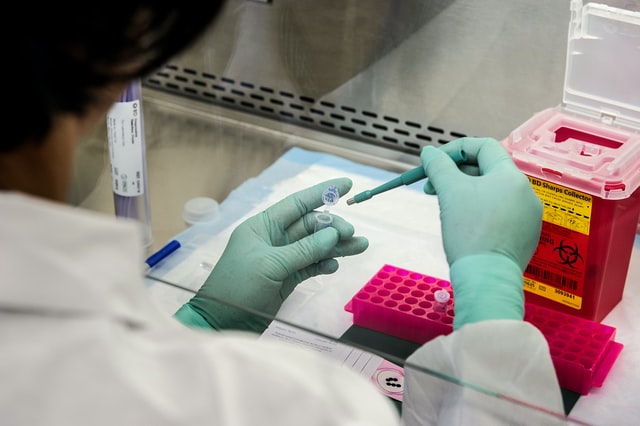What’s PCR means?
The Polymerase Chain Reaction or PCR is an essential tool used in molecular biology and diagnostic medicine.
What’s PCR used for?
The goal of PCR is to make enough copies of a target DNA region that it can be analysed or used in some other way. For instance, those DNA copies amplified by PCR may sent for Sequencing, visualized by Gel electrophoresis, or Cloned into a plasmid for further experiments.
PCR usage for Covid-19 detection
Viruses such as Corona ,depend on invading healthy cells. Once inside the cell, they uses own genetic code. In the case of the Coronavirus —it is RNA. After all, they take the control of the cells so that they become virus-making factories.
In order to detect such viruses , early in the body using PCR, first need to convert RNA to DNA, because single stranded RNA cannot multiply. This converting process called ‘Reverse Transcription’ (RT).
In an epidemic situation patient detecting and control the disease by isolating them is the most acceptable method. Therefore, fast and most sensitive testing methods would be useful. Real Time – Reverse Transcriptase – Polymer Chain Reaction (Real time RT-PCR) is a test like that.
Real time RT-PCR is a combination of PCR and Spectrofluorometric technology. Spectrofluorometer can be measuring the amount of viral DNA in the sample during the PCR continuously.
Real Time RT-CR virus detecting process
1. Sample collecting
A sample is collected by placing a sterile swab for several seconds at the back of a patient’s nasal passage, where the coronavirus gathers. It’s uncomfortable, but it’s not as bad as it looks. After a sample is collected, the swab goes into a liquid-filled tube for transport.
2. Extracting RNA from the sample
At the laboratory, sample is treated with several chemical solutions that remove nonessentials such as, proteins and fats, as sample should include only the RNA. This extracted RNA is a mix of a person’s own genetic material and, if present, the virus’ RNA.
3. Converting viral RNA to DNA
Using a specific enzyme, extracted RNA is reverse transcribed to DNA. For that additional short fragments of DNA called “primers”, which complementary to the transcribed viral DNA is also needed. If the virus is present, these fragments attach themselves to target sections of the viral DNA and build strands. And also, fluorescent detective DNA probes, called TaqMan added to the sample. The reason of adding TaqMan will describe in next steps.
4. Making copies of viral DNA
The mixture is then placed in a RT-PCR machine. The machine going through 3 step reaction cycles which perform different temperatures to occur specific chemical reactions that create new, identical copies of the target sections of viral DNA.
The basic steps are:
i. Denaturation (94-98 °C)
in this step, separate, or denature, the DNA strands by breaking the Hydrogen bonds between standards. This provides single-stranded DNA for the next step.
ii. Annealing (55 – 65° C°)
Then reduce the temperature of reaction so the primers can bind to their complementary sequences on the single-stranded template DNA. Here, added TaqMan recognize if there any viral DNA strand and bind to them as it’s exactly complimentary with viral DNA.
TaqMan is a single stranded DNA which consist with two molecules, fluorophore at the 5’ primer end and quencher at the 3’ primer end. Quencher is the inhibitor of the fluorophore, which absorb any fluorescence emits from the fluorophore.
iii. Elongation (75-80°)
Again, raise the temperatures so DNA polymerase extends the primers, synthesizing new strands of DNA. When enzyme react on the TaqMan which bind to viral DNA strand (if viral DNA present), it starts to degrade. As a result, fluorophore and the quencher disconnect from each other and fluorophore begins to emit fluorescence. Because quencher cannot inhibit its fluorescence anymore.
The cycle repeats to continue copying the target sections of viral DNA. Each cycle doubles the previous amount. A standard real time RT-PCR setup need to process around 35 billion new copies, which means it goes through 35 cycles.
5. Detecting fluorescence
If new copies of the viral DNA sections are built in the sample, fluorescent detective probes (TaqMan) attached DNA strands then emit fluorescence, which is measured by the spectrofluorometer. It can track the amount of fluorescence in the sample after each cycle. When the amount goes over a certain level of fluorescence, this confirms that the virus is present. If the abundance of virus in sample is high, which means severity of viral infection is high, the target level of fluorescence gain within few cycles.







